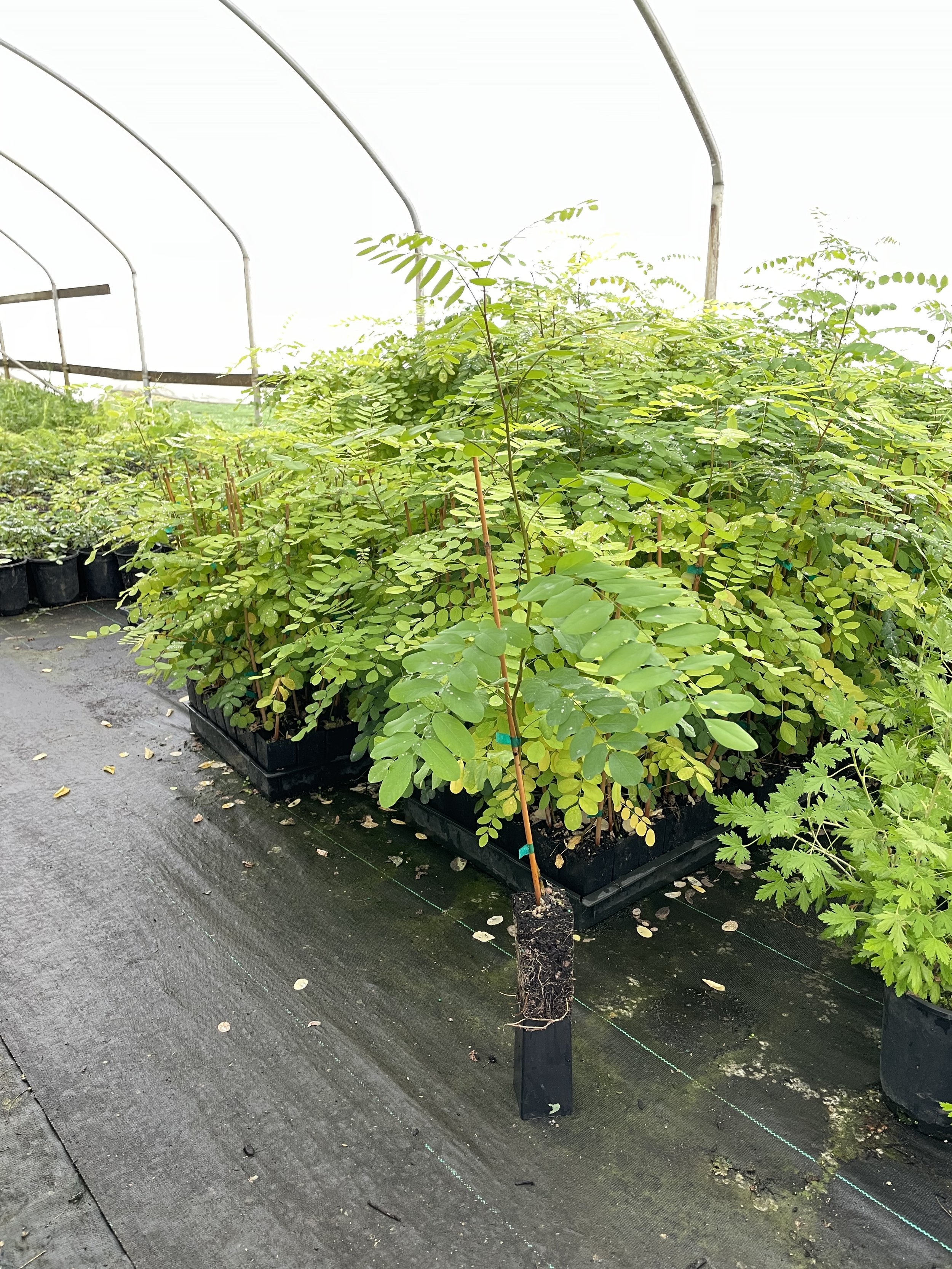
Harry Greene
Propagate Team
In this user spotlight, Propagate’s Chief Research Officer Harry Greene showcases the wide variety of design possibilities in Overyield.
Harry’s R&D work means he’s often traveling, exploring diverse agroforestry systems across different bioregions, scales, and cultures. From temperate to tropical, silvopasture to syntropy, Harry walks us through some of his more complex and illustrative designs, sharing important lessons learned, Overyield tips, and his general design process.
Multi-Strata Agroforestry & Silvopasture
In approaching a design, Harry’s first step is to situate access roads for equipment and/or laneways for grazing. This is far from simple, requiring an understanding of a site’s topography, wet and dry spots, cultural considerations like grazing preferences, driver predispositions, machinery specs, and more. He mentioned A Good Road Lies Easy On the Land by Bill Zeedyk as an excellent free resource that has shaped his thinking on roads. Some of this thinking is exemplified in the designs below:
Pictured right - Greatwonder Farm: Roads are situated on ridges — high and dry spots that leverage existing entrances and roads while avoiding wet spots.
Pictured left - Dharma Lea: Laneways for cattle movement function like arteries connecting buildings with grazing paddocks and shade paddocks, in some cases circumventing slopes to maximize cattle movement on flat ground; in other cases bisecting slopes to maximize efficiency.
Syntropic Agriculture
On the other end of the design spectrum, Harry walked us through syntropic agriculture modeled in OY. For reference, “syntropic agriculture” refers to a set of practices that aim to mimic natural systems in order to build soil fertility. In this design, a combination of fast-growing supporting species (e.g. corn, beans & tithonia for biomass, N-fixation, & nematode suppression, respectively) are paired with longer-term perennials that drive the system’s IRR (cacao, plantain, & avocado). Modeling annuals in Overyield at this scale is relatively straightforward, requiring users to adapt a crop template’s yield curve & operations.
Holistic Context
Of course, every design decision Harry makes is informed by the goals and capacity of the client he’s working with, not to mention the biogeographical context of the site itself. For the graziers of Dharma Lea, the organic dairy pictured above, the farm’s location between the Allegheny Plateau and Adirondacks makes for jarring terrain and vicious winds. These unique climatic considerations, combined with the farm’s need to prioritize forage availability, led Harry to design multifunctional silvopasture paddocks that not only provide shade and eventual timber revenue, but also serve as windbreaks and capitalize on the steep, wet and marginal soils where forage production might not otherwise flourish. Species selection is then informed by evaluating site suitability — factors like soil type and drainage. Though less visibly complex than other designs, Harry remarked that Dharma Lea was one of his most challenging projects to date.
Harry stressed that the best designs are those that on the one hand maximize profitability relative to capital invested, and on the other hand align with a client’s implementation and management capacity. Great Wonder Farm, pictured below, was designed to maximize returns through multistrata chestnuts and blackcurrants, which generate a significant IRR. At the same time, the design simplifies traditional Keyline geometry to fit the farm’s management preference for fewer turns and straighter rows.
Between designing and R&D with Propagate, Harry runs his own 50-acre farm in Ithaca, NY, where he grows chestnuts, black locust, and hickory planted to function as a silvopasture, along with 15 types of fruit on one condensed acre. You can stay apprised of Harry’s design, R&D, & farming goings-on by following him on Instagram & Linkedin.








